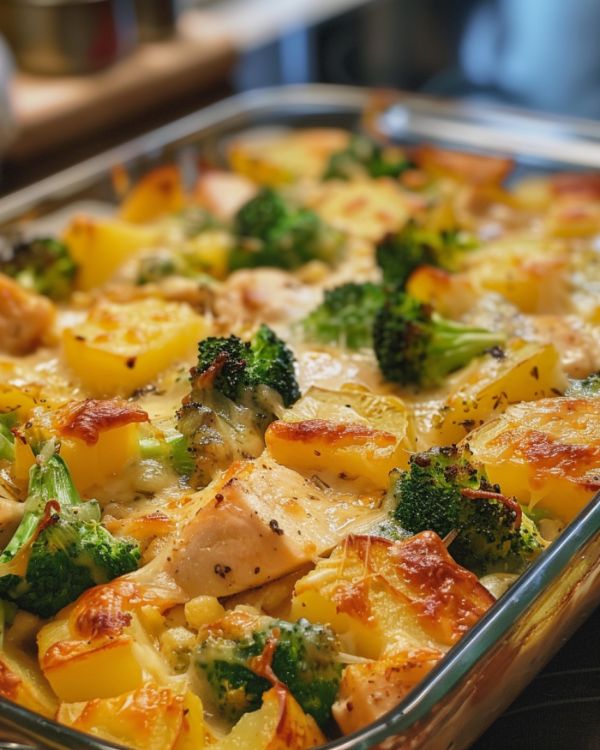ADVERTISEMENT
Step-by-Step Directions to Make Cottage Cheese Cake
Preheat the Oven: Preheat your oven to 350°F (175°C) and grease your springform or cake pan.
Prepare the Crust (Optional): If you’re using a crust, mix the crushed graham crackers or almond meal with melted butter. Press the mixture into the bottom of the pan to form an even layer. Bake for 8-10 minutes until slightly golden and set it aside.
Blend the Cottage Cheese: In a blender or using a hand mixer, blend the cottage cheese until smooth. This step is important to achieve a creamy, cheesecake-like texture.
Mix the Filling: In a large bowl, combine the blended cottage cheese, eggs, sugar, vanilla extract, lemon zest (if using), and cornstarch. Mix until all ingredients are well incorporated and smooth.
Pour the Filling: If using a crust, pour the filling over it. If not, simply pour the mixture into the greased pan.
Bake: Place the cake in the preheated oven and bake for 40-45 minutes or until the edges are set and the center is just slightly jiggly.
Cool: Let the cake cool in the pan for about 10 minutes before transferring it to a cooling rack. Once completely cool, refrigerate for at least 2 hours to allow the cake to set fully.
Serve: Slice the Cottage Cheese Cake and enjoy! You can serve it as is or garnish with fresh berries, a drizzle of honey, or a dusting of powdered sugar.
Storing Leftovers
If you have any leftovers (though they’re likely to disappear fast!), Cottage Cheese Cake stores well. Keep it in an airtight container in the refrigerator for up to 4 days.
Freezing Tip: You can also freeze the cake by wrapping it tightly in plastic wrap and storing it in a freezer-safe container for up to 3 months. Thaw overnight in the fridge before serving.
Recipe Tips & Variations
Make it Gluten-Free: Simply omit the crust or use gluten-free graham crackers or almond meal for a gluten-free version.
Add Fruit: Swirl in some fresh fruit puree like raspberry or blueberry into the batter before baking for a fruity touch.
Lower the Sugar: You can reduce the sugar or replace it with a sugar substitute for a healthier version.
Toppings Galore: Cottage Cheese Cake is a blank canvas for toppings. Try caramel, chocolate ganache, or whipped cream for an indulgent treat.
FAQs
1. Can I use low-fat cottage cheese?
Yes! Low-fat cottage cheese works well in this recipe and still gives the cake a creamy texture while keeping it lighter in calories.
2. Do I need to strain the cottage cheese?
Blending the cottage cheese smooths it out, so straining isn’t necessary. However, if your cottage cheese is particularly watery, you can strain it for a thicker texture.
3. Can I skip the crust?
Absolutely! The cake is delicious with or without a crust. Skipping the crust also makes it even quicker to prepare.
4. How do I know when the cake is done?
The cake is ready when the edges are set, but the center should still have a slight jiggle. It will continue to firm up as it cools.
Pairing Suggestions
Cottage Cheese Cake is light and pairs beautifully with fresh fruit. Try topping it with sliced strawberries, a handful of blueberries, or a drizzle of citrus syrup. For drinks, a light dessert wine like Moscato or a hot cup of herbal tea makes for a lovely pairing. If you prefer something non-alcoholic, a fresh fruit smoothie or a chilled iced tea would complement the creamy texture.
Call to Action
This Cottage Cheese Cake is the perfect way to indulge your sweet tooth without the guilt. Light, creamy, and endlessly versatile, it’s a dessert that will quickly become a household favorite. Give it a try and let us know how it turns out! If you enjoyed this recipe, share it with your friends and family, and don’t forget to subscribe to the blog for more simple, delicious, and wholesome recipes like this one.
ADVERTISEMENT
